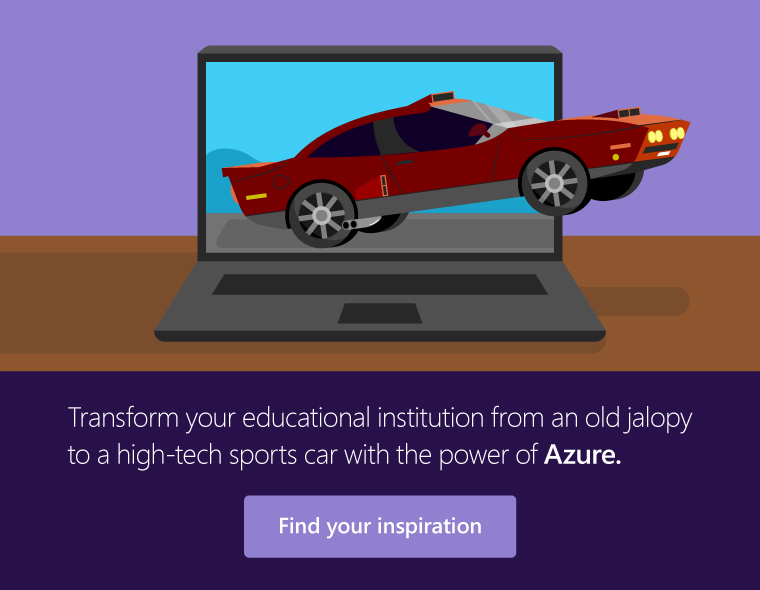
How Keiser University is transforming its business with the cloud
| Focus on: Engage students, Empower educators |
It’s 7:00 a.m. on the first day of a new academic session, and the servers at Keiser University are running at full power as students, faculty, and staff ramp up for a new month of learning. Twelve hours from now, the peak will drop for the evening, and some of those servers will shut down, saving the university thousands of dollars. A few days from now as students settle into their new routines, activity will drop during the daytime, too, so the system can run efficiently on even fewer servers.
Fortunately for the IT department, the system reboots, cranks through the data, and keeps everyone running at full speed all on its own, leaving IT staff with more time to be creative. In fact, today, Associate Vice Chancellor of IT Andrew Lee and his team are focusing on a paperless financial aid system. The ability to test new applications without the upfront capital needed for a traditional on-premises environment allows Keiser to stay on the leading edge of technology while saving the university precious time and funds.
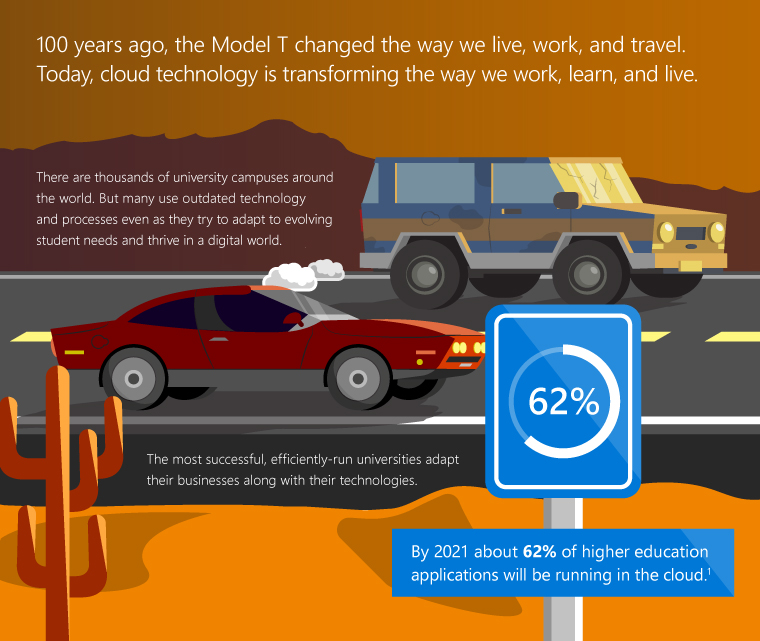
As Associate Vice Chancellor of IT at Keiser University, Andrew Lee handles everything that has to do with digital technology, ensuring that teachers and students have the tools and tech they need every day. When he joined Keiser 18 years ago, the IT department consisted of just two people serving five schools and 1,500 students.
Today, the university has 31 locations and close to 20,000 students. Andrew’s goal is to keep the school as “state of the art” as possible as it grows. He constantly looks for new technology that will help him do that while staying within budget.
Digital transformation is a movement that is creating unprecedented opportunities for organizations of all shapes and sizes to reinvent themselves as digital-first enterprises. In academia, the shift to a digital environment means institutions can grow rapidly and position themselves for students of the future. Keiser University’s true story of digital empowers faculty and staff and optimizes operations.
Explore the benefits of transforming your university’s legacy IT system and harnessing the power of the cloud.
Migrating an entire datacenter to AzureEighteen years ago, the university’s data was stored in a physical datacenter where the school owned the hardware. After transitioning to a “sort of” cloud, as Andrew describes it, where the hardware was leased and some of the infrastructure was paid for, he began looking at a full cloud solution.
“Everything was on the chopping block, and moving to the cloud just made sense,” Andrew says.
Microsoft Azure offered scalability and the ability to change on the fly. That sparked a fire in Andrew and his IT team, and now they’re moving the entire datacenter into Azure. With the new pay-as-you-go model, they don’t need up-front capital, and they have exactly as much as they need at any given time.
“It used to be that if we needed more storage, we had to lay out more capital expense. In Azure, we just log in and those resources are up and running within hours.” It’s a welcome change from the days of a physical datacenter with AT&T hosting. “Back then, we paid $35 – $40k every month. In Azure, I’ll have resources and servers that outshine anything we had there, and pay $5-10k less a month.”
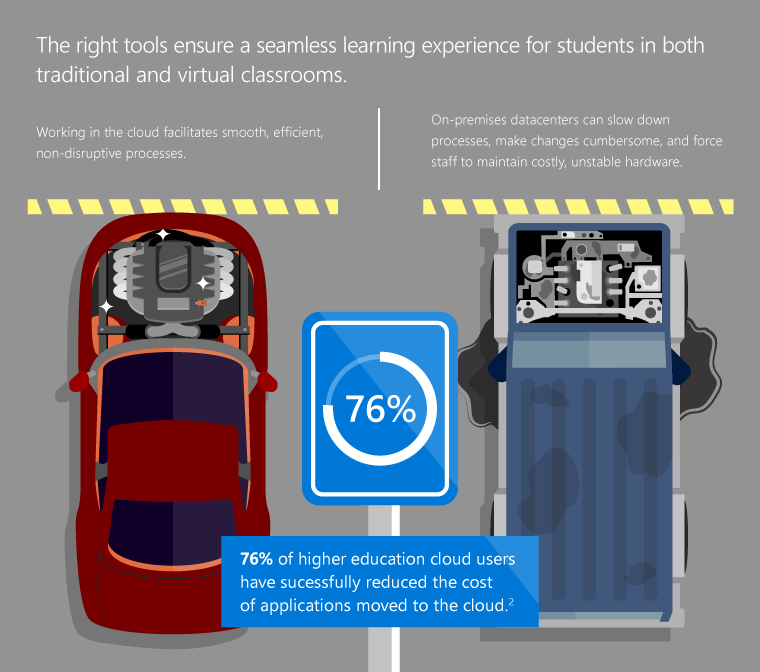
Without the restrictions inherent in a traditional system, Andrew and his team can be much more creative without breaking the budget. New ideas and projects can be tested and deployed without the red tape, and that means faculty can dream up new ways to educate their students, and those dreams can turn into reality much quicker.
“We’ve effectively gone from an old jalopy to an Italian sports car,” Andrew says.
With 2 million personal records, ensuring security is critical. And when it comes to compliance, Azure offers the ability to back up as much data as necessary for as long as it’s needed.
“In Azure, compliance is a no-brainer, and when you need more storage, you simply add it,” Andrew says.
Beyond Azure, Keiser University has migrated to Office 365 and is beginning to use more of the tools at their disposal. Staff and students who prefer to use their own devices on campus can quickly and securely connect to the school’s systems with Microsoft Enterprise Mobility Suite (EMS), and servers are secured, updated and patched with Microsoft Intune. Phishing attacks are the most common cyberthreat on campus, but by leveraging Active Directory, the IT department can help make sure accounts stay secure.
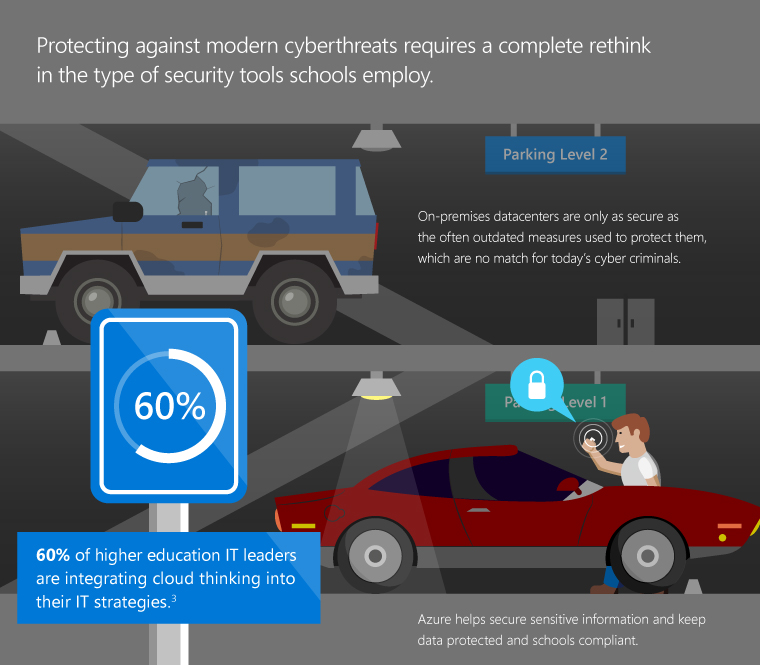
Empowering educators and administrators to focus on what mattersFor now, faculty, staff, and students are in the learning curve phase. Everyone has access to Office 365, and many are using OneNote and OneDrive to share documents and collaborate. Andrew’s IT department is doing the heavy lifting, migrating servers, data, and email to the cloud. Next up will be training and demo days to show faculty and staff all the tools that are readily available.
For educational institutions looking into a cloud solution, Andrew advises that it boils down to where you want to put your resources.
“In a cloud scenario, I’m out of the hardware business. After 18 years in this position, the thing that’s always caused the problems is hardware,” Andrew says. “Controller cards, fans, CPUs. Those are the things that come crashing down. With Azure, they’re a non-issue. All that redundancy is already there.”
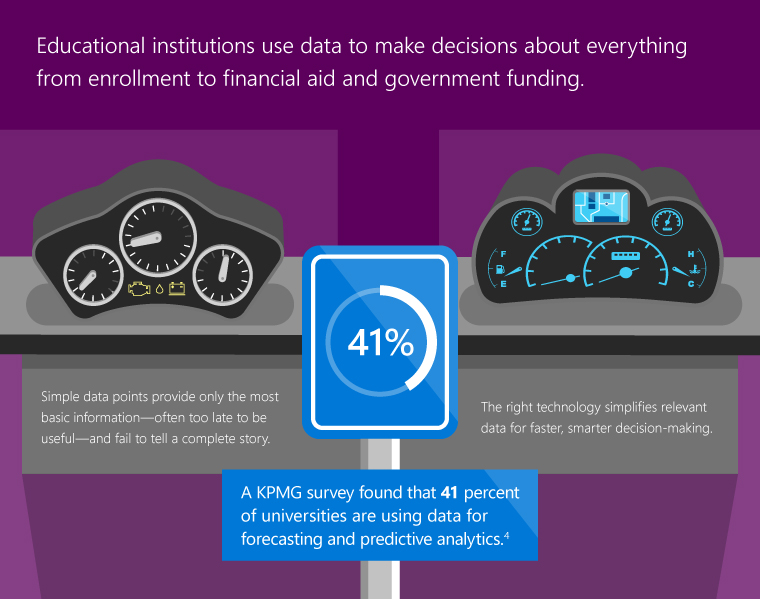
The best part? “No phone calls at 8 a.m. on a Sunday.” Andrew and his IT team sleep better at night knowing that the hardware pieces that tend to bring the system down go away. And that means they’re able to focus on being more of a partner in delivering technology so that faculty, staff, and students can get exactly what they need to do their work quickly and efficiently.
What’s next?Andrew’s vision for the university is one where faculty and staff can register their own devices and have quick access to the resources and software they need, safely and securely, without even involving the IT department, or needing their support. Which will free up the IT team to continue looking for ways to use technology to continue simplifying resources, delivering new solutions, and lowering costs.
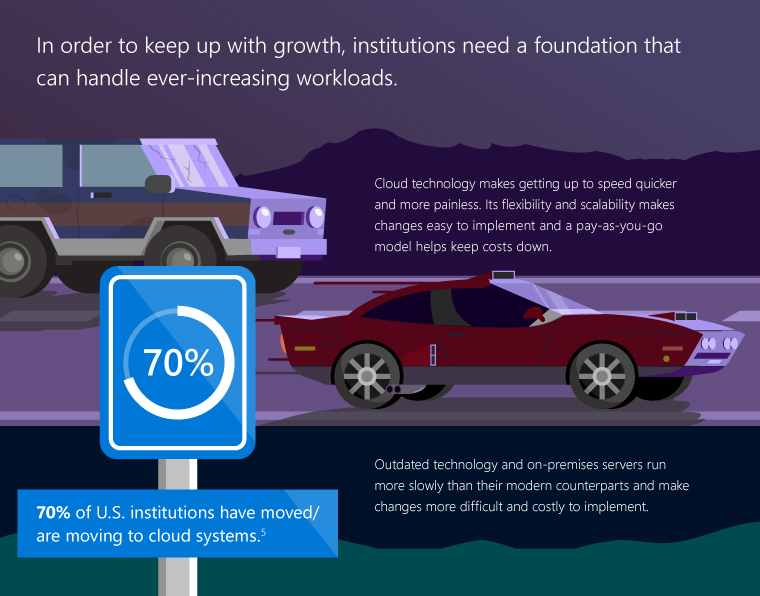 For Andrew, the light bulb moment was realizing that, with Azure, his team could stand up a demo environment and throw hardware at it, acknowledging the pitfalls and configuring it—all in one day–saving time and money in the deployment stage. Andrew fully optimizes Keiser University’s cloud investment, and he’s leveraging the fact that he can ride the wave of resource needs instead of keeping everything at 100% and waiting for ebbs and flows.
For Andrew, the light bulb moment was realizing that, with Azure, his team could stand up a demo environment and throw hardware at it, acknowledging the pitfalls and configuring it—all in one day–saving time and money in the deployment stage. Andrew fully optimizes Keiser University’s cloud investment, and he’s leveraging the fact that he can ride the wave of resource needs instead of keeping everything at 100% and waiting for ebbs and flows.
Microsoft is proud to partner with Andrew and Keiser University to keep up with the pace of change in their digital transformation journey.
Related Content
- Read more Real Stories of Digital Transformation
- Download the DIY Guide to a Modern IT Environment for Education

